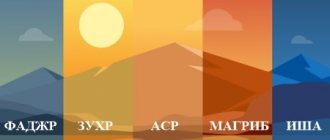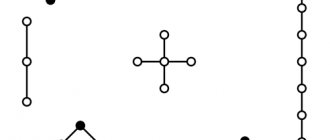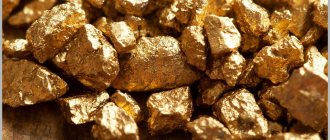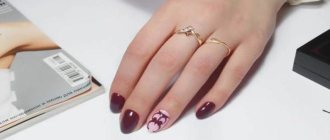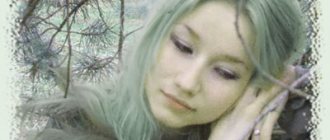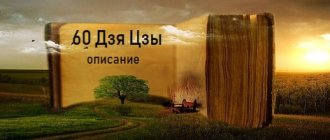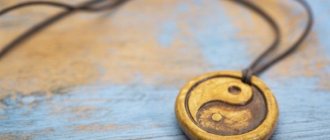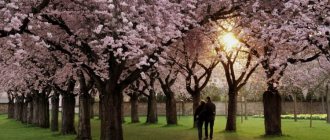Zengzi
(Chinese: 曾子, 505 - ca. 436 BC). Ancient Chinese philosopher. Son of Zeng Xi, also known as Jiang Dian. One of the most capable and beloved students of Confucius. In the Confucian tradition, he ranked third in importance after Confucius and Meng Ke. He emphasized the importance of the principle of “filial piety” (xiao), considering this principle a guarantor of universal virtue. Tradition credits Zengzi with the creation of such Confucian works as Da Xue and Xiao Jing. The bibliographic section of the book “Hanshu” mentions the work “Zengzi” of eighteen chapters. This work was later lost. According to “Lu Shi Chunqiu” and Sima Qian, Zengzi’s student was Wu Qi (“Lu Shi Chunqiu” Book Two. Chapter Four; Sima Qian Shi Ji. Chapter 65). Another student of Zengzi in Mencius is named Zi-Xiang (Mengzi. Chapter Three. Part One). The representative of the Yongjia school, the philosopher Ye Shi (1150-1223), expressed doubt that Zengzi correctly conveyed the teaching Confucius on Tao. Information about Zengzi and his views is contained in Lun Yu, Mencius, Zhuangzi, Xunzi, Huainanzi, Lüshi Chunqiu and other ancient Chinese works.
Testimonies of life and teaching
- “The teacher said: “Shen, all my dao (teachings) are one.
Tseng Tzu replied: “Exactly so!” When the teacher left, the students asked: -What does this mean? Zeng Tzu replied: “The teacher’s Tao consists of zhong (loyalty) and shu (generosity) and that’s all.” whale. 子曰:“參乎!吾道一以貫之。”曾子曰:“唯。”子出。門人問曰:“何謂也?”曾子曰:“夫子之道,忠恕而已矣。” - Lun Yu. IV, 15.
- Tseng Tzu said: A noble man makes friends with the help of wen (culture), and improves ren
(philanthropy) with the help of friendship. whale. 曾子曰:“君子以文會友,以友輔仁。” - Lun Yu. XII, 24
- Tseng Tzu said: “If a man, sitting in a room, thinks about how to catch a mouse, how can he sing with me at that time?”
whale. 曾子曰:“是其庭可以搏鼠,惡能與我歌矣!” - Xunzi. Chapter 21.
- Tseng Tzu said: “When a noble man walks along the road, you can immediately tell by his appearance whether he has a father and whether he has a mentor. Someone who has no father and no mentor looks completely different.” whale. › !” - Luishi Chunqiu. Book 4, ch. 2.
JIA ZI
, Metal. These are precious items. Loves the land of the flowering of Metal and Wood. Stars: Shen Xi, Fu Xing, Ping Tou, Xuan Zhen, Po Zi. And CHOW, Metal. This is hard ore. Loves Fire and South, as well as their corresponding time. Stars Fu Xing, Hua Gai, Zheng Ying.
BING YIN , Fire. This is coal in the oven. Loves winter and the element of Wood. Stars Fu Xing, Lu Xing, Ping Tou, Long Ya.
DING MAO , Fire. This is smoke from the stove. Loves the land of the gua sign XUN, as well as autumn and winter. Stars Ping Tou, Jie Du, Xuan Zhen.
WU CHEN , Tree. This is a tree from a mountain forest, from wild mountainous places, which cannot be used as a material. Loves Water. Stars Lu Ku, Hua Gai, Shui Lu, Ma Ku, Ben Zhang, Fu Shen, Ping Tou.
JI SY , Tree. Flowers and herbs on the top of the mountain. Loves spring and autumn. Stars Lu Ku, Ba Ji, Que Zi, Qu Jiao.
GEN U , Soil. Dry soil near the road. Loves Water, as well as spring. Stars Fu Xing, Guan Gui, Jie Lu, Ban Zhang, Xuan Zhen.
XIN WEI , Soil. Concealing myriads of jewels, when autumn comes, it becomes perfect. Loves autumn and water. Stars Hua Gai, Xuan Zhen, Po Zi.
REN SHEN , Metal. Ax and halberd. He loves the signs ZI, Wu, MAO, Yu very much. Stars Pin Tou, Da Bai, Fan Hai, Long Ya, Po Zi, Xuan Zhen.
GUY Yu , Metal. Metal awl and chisel. Loves Wood, as well as the YIN and MAO signs. Stars Fu Shen, Po Zi, Long Ya.
JIA XU , Fire. The place where Fire rests. Loves spring and summer. Stars Zheng Ying, Hua Gai, Ping Tou, Xuan Zheng, Po Zi, Ban Zhang.
And HI , Fire. Hot breath of fire. Loves the soil and summer. Stars of Tian De, Qu Jiao.
BING ZI , Water. Rivers and lakes. Loves Wood and Soil. Stars Fu Xing, Guan Gui, Ping Tou, Long Ya, Jiao Shen, Fei Ren.
DING CHOW , Water. A completely transparent place where there is no flow of water. Loves Metal, as well as summer. Stars Hua Gai, Jin Shen, Ping Tou, Fei Ren, Que Zi.
WU YIN , Soil. Embankment, rampart, fence, wall. Loves Wood and Fire. Stars Fu Shen, Ban Zhang, Long Ya.
JI MAO , Soil. A destroyed embankment, a broken wall. Loves the Shen and Yu signs, as well as Fire. Stars Jin Shen, Duan Yao, Jiu Chou, Que Zi, Qu Jiao, Xuan Zhen.
GEN CHEN , Metal. Tin solder. Loves autumn, as well as weak Trees. Stars Hua Gai, Da Bai, Ban Zhang, Ping Tou.
XIN SY , Metal. The most hidden of Metals, mixed with sand and stones. Loves Fire, as well as autumn. Stars Tian De, Fu Xing, Guan Gui, Jie Lu, Da Bai, Xuan Zhen, Qu Jiao.
REN WU , Tree. Dry willow branches. Loves spring and summer. Stars Guan Gui, Jiu Chou, Fei Ren, Ping Tou, Long Ya, Xuan Zhen.
GUI WEI , Tree. Willow roots. Loves winter and water. I also like spring. Stars Zheng Ying, Hua Gai, Duan Yao, Fu Shen, Fei Ren, Po Zi.
JIA SHEN , Water. Sweet well. Loves spring and summer. Stars Po Lu Ma, Jie Lu, Ping Tou, Po Zi, Xuan Zhen.
And Yu , Water. Water in the gutter. Loves the East and also the South. Stars Po Lu, Duan Ya, Jiu Chou, Qu Jiao, Po Zi, Long Ya.
BING XU , Soil. Pile, hill. Loves spring, summer and water. Stars Tian De, Hua Gai, Ping Tou, Long Ya.
DING HAI , Soil. Plain. Loves Fire and Wood. Stars Tian Yi, Fu Xing, Guan Gui, De He, Ping Tou.
Wu ZI , Fire. Thunder. Loves Water, as well as spring and summer. Comes into contact with the Soil and deifies Heaven. Stars Fu Shen, Duan Yao, Jiu Chou, Zhang Xing, Fei Ren.
JI CHOU , Fire. Lightning. Loves Water, as well as spring and summer. Comes into contact with the Earth and becomes darkness. Stars Hua Gai, Da Bai, Fei Ren, Qu Jiao, Que Zi.
GEN YIN , Tree. Dry branches of pine and cypress. Loves autumn and winter. Stars Po Lu Ma, Xiang Xing, Zhang Xing, Long Ya.
XIN MAO , Tree. Pine and cypress roots. Loves Water, Soil, and also spring. Stars Po Lu, Jiao Shen, Jiu Chou, Xuan Zhen.
REN CHEN , Water. Dragon Water. Loves thunder, lightning, and spring and summer. Stars Zheng Ying, Tian De, Shui Lu Ma Ku, Tui Shen, Ping Tou, Long Ya.
GUI SY , Water. This is the non-stop movement of water, streams flowing into the sea. Loves the signs HAI and ZI, that is, changes and transformations. Stars Tian Yi, Guan Gui, De He, Fu Ma, Po Zi, Qu Jiao.
JIA Wu , Metal. The thinnest metal melted a hundred times. Loves Water, Wood and Soil. Stars Jin Shen, De He, Ping Tou, Po Zi, Xuan Zhen.
I WEI , Metal. Metal remaining after melting in a furnace. Loves big Fire and Soil. Stars Hua Gai, Jie Lu, Qu Jiao, Po Zi.
BING SHEN , Fire. Fire in the wild from white reeds. Loves autumn, winter, and also Trees. Stars Ping Tou, Long Ya, Da Bai, Po Zi, Xuan Zhen.
DING Yu , Fire, Wonderful reflection of spirits and gods. Fire without form. Loves the signs XU, CHEN, CHOU and WEI. Stars Tian Yi, Xi Shen, Ping Tou, Po Zi, Long Ya, Da Bai.
WU XU , Tree. Stems of dry wormwood. Loves Fire, as well as spring and summer. Stars Hua Gai, Da Bai, Ba Zhuan, Zhang Xing, Jie Lu.
JI HAI , Tree. Wormwood leaves. Loves Water, as well as spring and summer. Stars Q Yue Zi, Qu Jiao.
GEN ZI , Soil. Voids in the soil. Space in a room, house. Loves Wood and also Metal. Stars Mu De He, Zhang Xing.
XIN CHOU , Soil. Grave Hill. Loves Wood, as well as Fire and spring. Stars Hua Gai, Xuan Zhen, Que Zi.
REN YIN , Metal. Metal Jewelry. He loves Wood, as well as weak Fire, the Stars of Jie Lu, Ping Tou, Long Ya.
GUI MAO , Metal. Metal buttons, fasteners, bells. Loves strong Fire and autumn. Stars Gui Ren, Po Zi, Xuan Zhen.
JIA CHEN , Fire. Lamp. Loves the night, as well as Water. Doesn't like the day. Stars Hua Gai, Da Bai, Ping Tou, Po Zi, Xuan Zhen.
AND SY , Fire. Lamp light. Similar to the previous one, and also loves the signs of Shen, Yu and autumn. Stars Zheng Lu Ma, Da Bai, Qu Jiao, Que Zi.
BIN U , Water. Lunar disk. Loves the night and also autumn. Water in bloom. Stars Xi Shen, Yang Ren, Jiao Shen, Ping Tou, Long Ya, Xuan Zhen.
DING WEI , Water. Light of Water. Just like the previous sign. Stars Hua Gai, Yang Ren, Tui Shen, Ba Zhuan, Ping Tou, Po Zi.
WU SHEN , Soil. Soil on an autumn field. Loves the signs SHEN and YU, as well as Fire. Stars Fu Xing, Fu Ma, Zhang Xing, Po Zi, Xuan Zhen.
JI Yu , Soil. Rice in the autumn field. Loves the signs SHEN and YU, as well as winter. Stars Tui Shen, Jie Lu, Jiu Chou, Que Zi, Qu Jiao, Po Zi, Long Ya.
GEN XU , Metal. Remains of a dagger and sword. Loves weak Fire and Wood. Stars Hua Gai, Zhang Xing.
XIN HAI , Metal. Massive objects, bells and tripods. Loves Wood, Fire, and also Soil. Stars Zheng Lu Ma, Xuan Zhen.
REN ZI , Tree. A tree damaged by excess water. Loves Fire, Soil, and also summer. Stars Yang Ren, Jiu Chou, Ping Tou, Long Ya.
GUI CHOU , Tree. A tree damaged by lack of water. Loves Metal, Water, and also autumn. Stars Hua Gai, Fu Xing, Ba Zhuan, Po Zi, Que Zi, Yang Ren.
JIA YIN , Water. Rain. Loves summer, as well as Fire. Stars Zheng Lu Ma, Fu Shen, Ba Zhuan, Ping Tou, Po Zi, Xuan Zhen, Long Ya.
And MAO , Water. Dew. Loves Water and Fire. Stars Jian Lu, Xi Shen, Ba Zhuan, Jiu Dao, Qu Jiao, Xuan Zhen.
BIN CHEN , Soil. Embankment, shore. Loves Metal and Wood. Stars Lu Ku, Zheng Ying, Hua Gai, Jie Lu, Ping Tou, Long Ya.
DING SY , Soil. Soil in a swamp. Loves Fire, as well as the North-West. Stars Lu Ku, Ping Tou, Que Zi, Qu Jiao.
Wu Wu , Fire. Disk of the sun. In summer people fear him, but in winter people love him. Avoids the signs WU ZI, JI CHOU, JIA YIN, AND MAO. Stars Fu Shen, Yang Dao, Jiu Chou, Ban Zhang, Xuan Zhen.
JI WEI , Fire. Sunlight. Doesn't like the night. He is also afraid of the four. Stars Hua Gai, Yang Dao, Que Zi, Qu Jiao, Po Zi.
GEN SHEN , Tree, pomegranate flowers. Loves summer. Doesn't like autumn and winter. Stars Jian Lu Ma, Ba Zhuan, Zhang Xing, Po Zi, Xuan Zhen.
XIN YU , Tree. Pomegranate seeds. Loves autumn and also summer. Stars Jian Lu, Jiao Shen, Jiu Chou, Ba Zhuan, Xuan Zhen, Long Ya.
REN XU , Water. Sea. Loves spring, summer, and also trees. Stars Hua Gai, Tui Shen, Ping Tou, Long Ya, Zhang Xing.
GUY HAI , Water. All rivers. Loves Metal, Soil, Fire. Stars Fu Ma, Da Bai, Po Zi, Jie Lu.
In its most developed form, the gan-zhi system was used, among other things, for predictions using the concept of wu-xing.
| Year | Pinyin | Transcription | Yin and Yang | Five elements | Zodiac animal | |
| 1 | 甲子 | jiǎ-zǐ | jia tzu | 阳 Yang | 木 Tree | 鼠 Mouse |
| 2 | 乙丑 | yǐ-chǒu | i-chow | 阴 Yin | 牛 Cow | |
| 3 | 丙寅 | bǐng-yin | bin-yin | 阳 Yang | 火 Fire | Tiger |
| 4 | 丁卯 | dīng-mǎo | ding-mao | 阴 Yin | 兔 Rabbit | |
| 5 | 戊辰 | wù-chen | wu-chen | 阳 Yang | 土 Earth | Dragon |
| 6 | 己巳 | jǐ-sì | ji-si | 阴 Yin | 蛇 Snake | |
| 7 | 庚午 | gēng-wǔ | gen-u | 阳 Yang | Metal | 馬 Horse |
| 8 | 辛未 | xīn-wèi | xin-wei | 阴 Yin | Sheep | |
| 9 | 壬申 | ren-shēn | ren-shen | 阳 Yang | Water | Monkey |
| 10 | 癸酉 | guǐ-yǒu | gui-yu | 阴 Yin | Rooster | |
| 11 | 甲戌 | jiǎ-xū | chia-xu | 阳 Yang | 木 Tree | Dog |
| 12 | 乙亥 | yǐ-hài | e-hai | 阴 Yin | 猪 Pig | |
| 13 | 丙子 | bǐng-zǐ | bingzi | 阳 Yang | 火 Fire | 鼠 Mouse |
| 14 | 丁丑 | dīng-chǒu | ding-chow | 阴 Yin | 牛 Cow | |
| 15 | 戊寅 | wù-yín | wu-yin | 阳 Yang | 土 Earth | Tiger |
| 16 | 己卯 | jǐ-mǎo | ji mao | 阴 Yin | 兔 Rabbit | |
| 17 | 庚辰 | gēng-chén | geng-chen | 阳 Yang | Metal | Dragon |
| 18 | 辛巳 | xīn-sì | xin-sy | 阴 Yin | 蛇 Snake | |
| 19 | 壬午 | rén-wǔ | ren-wu | 阳 Yang | Water | 馬 Horse |
| 20 | 癸未 | guǐ-wèi | gui-wei | 阴 Yin | Sheep | |
| 21 | 甲申 | jiǎ-shēn | chia-shen | 阳 Yang | 木 Tree | Monkey |
| 22 | 乙酉 | yǐ-yǒu | i-yu | 阴 Yin | Rooster | |
| 23 | 丙戌 | bǐng-xū | bing xu | 阳 Yang | 火 Fire | Dog |
| 24 | 丁亥 | dīng-hài | ding-hai | 阴 Yin | 猪 Pig | |
| 25 | 戊子 | wù-zǐ | wu-tzu | 阳 Yang | 土 Earth | 鼠 Mouse |
| 26 | 己丑 | jǐ-chǒu | ji-chow | 阴 Yin | 牛 Cow | |
| 27 | 庚寅 | gēng-yin | gen-yin | 阳 Yang | Metal | Tiger |
| 28 | 辛卯 | xīn-mǎo | xin mao | 阴 Yin | 兔 Rabbit | |
| 29 | 壬辰 | ren-chen | ren-chen | 阳 Yang | Water | Dragon |
| 30 | 癸巳 | guǐ-sì | gui-sy | 阴 Yin | 蛇 Snake | |
| 31 | 甲午 | jiǎ-wǔ | jia-wu | 阳 Yang | 木 Tree | 馬 Horse |
| 32 | 乙未 | yǐ-wèi | Yi-wei | 阴 Yin | Sheep | |
| 33 | 丙申 | bǐng-shēn | Bing Shen | 阳 Yang | 火 Fire | Monkey |
| 34 | 丁酉 | dīng-yǒu | ding-yu | 阴 Yin | Rooster | |
| 35 | 戊戌 | wù-xū | wu-xu | 阳 Yang | 土 Earth | Dog |
| 36 | 己亥 | jǐ-hài | ji-hai | 阴 Yin | 猪 Pig | |
| 37 | 庚子 | gēng-zǐ | gengzi | 阳 Yang | Metal | 鼠 Mouse |
| 38 | 辛丑 | xīn-chǒu | Hsin-chow | 阴 Yin | 牛 Cow | |
| 39 | 壬寅 | ren-yin | ren-yin | 阳 Yang | Water | Tiger |
| 40 | 癸卯 | guǐ-mǎo | gui-mao | 阴 Yin | 兔 Rabbit | |
| 41 | 甲辰 | jiǎ-chen | jia-chen | 阳 Yang | 木 Tree | Dragon |
| 42 | 乙巳 | yǐ-sì | i-sy | 阴 Yin | 蛇 Snake | |
| 43 | 丙午 | bǐng-wǔ | bin-u | 阳 Yang | 火 Fire | 馬 Horse |
| 44 | 丁未 | dīng-wèi | ding-wei | 阴 Yin | Sheep | |
| 45 | 戊申 | wù-shēn | wu-shen | 阳 Yang | 土 Earth | Monkey |
| 46 | 己酉 | jǐ-yǒu | ji-yu | 阴 Yin | Rooster | |
| 47 | 庚戌 | gēng-xū | geng xu | 阳 Yang | Metal | Dog |
| 48 | 辛亥 | xīn-hài | hsin-hai | 阴 Yin | 猪 Pig | |
| 49 | 壬子 | rén-zǐ | renzi | 阳 Yang | Water | 鼠 Mouse |
| 50 | 癸丑 | guǐ-chǒu | gui-chow | 阴 Yin | 牛 Cow | |
| 51 | 甲寅 | jiǎ-yín | jia yin | 阳 Yang | 木 Tree | Tiger |
| 52 | 乙卯 | yǐ-mǎo | i-mao | 阴 Yin | 兔 Rabbit | |
| 53 | 丙辰 | bong-chen | Bing-chen | 阳 Yang | 火 Fire | Dragon |
| 54 | 丁巳 | dīng-sì | din-sy | 阴 Yin | 蛇 Snake | |
| 55 | 戊午 | wù-wǔ | ooh | 阳 Yang | 土 Earth | 馬 Horse |
| 56 | 己未 | jǐ-wèi | ji-wei | 阴 Yin | Sheep | |
| 57 | 庚申 | gēng-shēn | geng shen | 阳 Yang | Metal | Monkey |
| 58 | 辛酉 | xīn-yǒu | xin-yu | 阴 Yin | Rooster | |
| 59 | 壬戌 | ren-xū | ren-xu | 阳 Yang | Water | Dog |
| 60 | 癸亥 | guǐ-hài | gui-hai | 阴 Yin | 猪 Pig |
Literature
- "Chinese philosophy. Encyclopedic Dictionary" - Moscow, "Mysl", 1994. P. 425. ISBN 5-244-00757-2
- History of Chinese philosophy. M., 1989. P.369-370. ISBN 5-01-001036-4
- Feng Yu-lan. A Brief History of Chinese Philosophy. St. Petersburg, 1998. - P.64; 206. ISBN 5-8071-0008-5
- Perelomov L. S. Confucius. Lun Yu. Study; translation of ancient Chinese, comments. Facsimile text of Lun Yu with comments by Zhu Xi. M.Nauka.1998. By name index. ISBN 5-02-018024-6
- Bryan W. Van Norden. The Dao of Kongzi // Asian Philosophy: An International Journal of the Philosophical Traditions of the East, 1469-2961, Volume 12, Issue 3, 2002, Pages 157-171
Excerpt describing Zengzi
The Count again went behind the partition and lay down. The Countess approached Natasha, touched her head with her inverted hand, as she did when her daughter was sick, then touched her forehead with her lips, as if to find out if there was a fever, and kissed her. -You're cold. You're shaking all over. You should go to bed,” she said. - Go to bed? Yes, okay, I'll go to bed. “I’ll go to bed now,” Natasha said. Since Natasha was told this morning that Prince Andrei was seriously wounded and was going with them, only in the first minute she asked a lot about where? How? Is he dangerously injured? and is she allowed to see him? But after she was told that she could not see him, that he was seriously wounded, but that his life was not in danger, she, obviously, did not believe what she was told, but was convinced that no matter how much she said, she would be answer the same thing, stopped asking and talking. All the way, with big eyes, which the countess knew so well and whose expression the countess was so afraid of, Natasha sat motionless in the corner of the carriage and now sat in the same way on the bench on which she sat down. She was thinking about something, something she was deciding or had already decided in her mind now - the countess knew this, but what it was, she did not know, and this frightened and tormented her. - Natasha, undress, my dear, lie down on my bed. (Only the countess alone had a bed made on the bed; m me Schoss and both young ladies had to sleep on the floor on the hay.) “No, mother, I’ll lie down here on the floor,” Natasha said angrily, went to the window and opened it. The adjutant’s groan from the open window was heard more clearly. She stuck her head out into the damp air of the night, and the countess saw how her thin shoulders shook with sobs and beat against the frame. Natasha knew that it was not Prince Andrei who was moaning. She knew that Prince Andrei was lying in the same connection where they were, in another hut across the hallway; but this terrible incessant groan made her sob. The Countess exchanged glances with Sonya. “Lie down, my dear, lie down, my friend,” said the countess, lightly touching Natasha’s shoulder with her hand. - Well, go to bed. “Oh, yes... I’ll go to bed now,” said Natasha, hastily undressing and tearing off the strings of her skirts. Having taken off her dress and put on a jacket, she tucked her legs in, sat down on the bed prepared on the floor and, throwing her short thin braid over her shoulder, began to braid it. Thin, long, familiar fingers quickly, deftly took apart, braided, and tied the braid. Natasha's head turned with a habitual gesture, first in one direction, then in the other, but her eyes, feverishly open, looked straight and motionless. When the night suit was finished, Natasha quietly sank down onto the sheet laid on the hay on the edge of the door. “Natasha, lie down in the middle,” said Sonya. “No, I’m here,” Natasha said. “Go to bed,” she added with annoyance. And she buried her face in the pillow.
TeaTerra
Along with varieties of tea plants whose young shoots are soft green, there are also those whose buds and young leaves are reddish, purple or burgundy in color. This is due to their high content of anthocyanins.
Anthocyanins
– the most important (along with carotenoids and betalains) plant pigments, widespread in nature. Red, purple, pink, blue and blue flowers, ripe fruits, colors of autumn foliage - anthocyanins are responsible for all this. Anthocyanins are glycosides, which means that their molecules consist of a non-carbohydrate part (aglycone) and a carbohydrate residue, which can be represented by mono- (glucose, galactose, rhamnose), di- and trisaccharides; Anthocyanin molecules may also contain other fragments - for example, caffeic acid residues. Anthocyanin aglycones are called anthocyanidins and, like catechins, belong to flavonoids (you can understand the relationship between these concepts using the post https://vk.com/club47905050?w=wall-47905050_9301), they are based on the structure of flavylium (2-phenylchromenyly ), some of the hydrogen atoms in three rings of which can be replaced by hydroxy and methoxy groups (see photos 4 and 5). The color of the pigment depends on the number and type of these groups, but this does not exhaust the possibilities of the anthocyanin palette. The color is also affected by other parts of the molecule, the acidity of the medium (some anthocyanidins have up to 4 color transitions depending on the pH of the medium), and the presence of metal ions (aluminum, iron, magnesium, molybdenum, tungsten). This is why the colors of flowers, fruits and leaves are so varied.
The biosynthesis of anthocyanins is complex - over two hundred proteins are directly or indirectly involved in it (see https://pubmed.ncbi.nlm.nih.gov/31853722/) - but has been studied quite well, which makes it possible to create new varieties of crops with unusual colors, more details You can read about it here - https://biomolecula.ru/articles/raznotsvetnye-chudesa.. . But there is no complete clarity regarding their function. It's clear that colorful flowers attract pollinators; but why do you need pink or burgundy coloring of young shoots? The synthesis of anthocyanins is often enhanced when exposed to stress factors - high or, conversely, low temperature, drought, and especially intense direct sunlight. It is hypothesized that anthocyanins may protect delicate plant tissues from excess ultraviolet radiation and help stabilize photosynthesis.
Anthocyanidins such as pelargonidin, cyanidin, delphinidin, peonidin, malvidin, etc. are found in tea plants. They are also present in the leaves of ordinary green-leaved cultivars, but in small quantities - about 0.01%; this does not affect their color, it is almost entirely caused by chlorophyll. And in the leaves of purple varieties of tea plants there are 50-100 times more of them - up to 0.5-1%. The final color depends not only on the structure of anthocyanins and their quantity, but also on the ratio of chlorophylls a and b and other factors and varies greatly depending on growing conditions (see photo 6). As a rule, a red or purple tint is expressed in the buds and the first 2-4 leaves on the shoot; as the leaf grows, it decreases; mature, last year's leaves have the usual dark green color.
Attitudes towards purple tea raw materials were different in different periods of tea history. Purple tea is highly praised in the writings of Lu Yu; Other famous poets of the Tang era, Qian Qi and Zhang Ji, spoke positively about him. However, later, due to the specific shades of taste and aroma and unusual appearance, the reddish buds and leaves began to be considered substandard. Interest in them has increased in recent decades - partly due to the craving for everything original and exotic, partly due to the medical potential of anthocyanins. They have antioxidant properties, and therefore, it can be assumed that they are anti-carcinogenic, anti-sclerotic, etc. effects. There are studies in which purple tea has demonstrated a greater ability to normalize high blood pressure compared to regular tea. But, of course, it would be premature to talk about the healing effects of purple tea.
Purple coloring is more common in wild plants that reproduce by seeds, which is quite understandable - for at least several centuries, mainly “standard” colored tea, green, was selected for vegetative propagation and mass cultivation. Therefore, purple tea is primarily a Yunnan theme, because it is in Yunnan that the share of wild-growing tea in the tea industry is significant. Yunnan red teas and sheng pu-erh made from purple raw materials are well known and have already become familiar; they have a strong specific shade of aroma and taste that can evoke associations with grapefruit, berries or currant leaves; in general, it is easier to feel than to accurately describe. Green tea made from purple raw materials is less common, and as for shu pu-erh, the specificity of purple raw materials is not so noticeable.
In 1985, in the Nannoshan Mountains, employees of the Tea Research Institute of the Yunnan Academy of Agricultural Sciences discovered a natural tea garden with a large number of trees with an unusually rich purple color of buds and leaves. Even the infusion of tea made from raw materials from these trees had a distinct lilac hue. The anthocyanin content in the young leaves of these trees turned out to be several times higher than that of most known purple varieties - up to 2.9%. As a result of the study and vegetative propagation of this population, the cultivar Zi Juan was created, which can be written in two different ways: 紫鹃 - “Purple Cuckoo” (with a reference to Zi Juan, the devoted servant of Lin Daiyu, one of the main heroines of “The Dream of the Red Chamber” ) and 紫娟 – “Purple Beauty”; Currently, both spellings occur and should be considered synonymous. In 2005, the Zi Juan cultivar was registered. It is cultivated mainly in Menghai.
Zi Juan belongs to the xiaoqiaomu type - a small upright tree with large leaves and medium bud size, semi-spreading in shape, with relatively thick branches and medium crown density. The leaves are willow-like, with pointed tips. The buds, leaves, and cuttings have a red-violet color, gradually changing from spring to early winter; the plant is highly decorative and can be used in landscape design. The finished tea is dark gray or almost black with a bluish tint, the infusion is grayish-pink or lilac, the “tea bottom” is dark, gray-blue with a tint of indigo.
Unlike Zi Juan, the name Zi Ya (紫芽) - “Purple Buds” does not designate any specific cultivar, but is usually a collective name for all varieties of purple tea. In some sources, Zi Juan is included in the concept of Zi Ya, in others, Zi Juan with its exceptionally dark color is contrasted with the rest of Zi Ya, whose “tea bottom” is not so dark and more variegated (see photos 9 and 10), and the color of the infusion is closer to dark yellow, sometimes with a grayish tint.
It should be noted that although the character 芽 in the names of tea varieties often serves as an indication that the tea is made mainly or exclusively from the buds (for example, Mengding Huang Ya, Fu Xi Gong Ya, Meitan Cui Ya), Zi Ya does not at all mean that the tea will consist only of kidneys. Zi Ya Cha is simply a designation for purple tea as a botanical phenomenon, as well as the finished tea from such raw materials.
Sometimes the expression Ye Sheng Cha (野生茶) - “wild growing tea” - is used to designate some purple varieties of tea plants in Yunnan, Thailand and Burma, which, of course, does not add clarity.
Another term is Zi Jian (紫尖), “Purple Points,” which usually refers to the finished product. This is more often the name given to purple sheng pu-erhs with the collection standard bud – bud+leaf, but this term does not have a strictly defined meaning. If you come across it, it is also better to take it simply as a designation for purple tea.
“Zi” can be translated as both purple and violet. In this article, I use the translation “purple” because the color purple in different regions and at different times was called different shades of color from crimson to dark purple, depending on the type of shellfish from which the purple was extracted. The range of colors of Tzu Ya Cha is almost as wide.
In addition to Yunnan purple teas, there is the Fujian cultivar Hong Ya Fo Shou (红芽佛手) - “Buddha Palms with Red Kidney”, as well as a number of other red-leaved Fujian teas; Tai Xiang Zi (苔香紫) in Zhejiang; purple ninghuns; etc.
Plantation plantings of Zi Juan.
Structure of the most important anthocyanidins.
Structure of some anthocyanidins and anthocyanins.
Eleven varieties of Tzu Ya Cha. Differences in the shape and serration of the leaves are clearly visible. The twelfth square shows “standard” green leaf tea for comparison.
Purple sheng puer.
Tea from the Zi Juan cultivar.
“Tea Bottom” by Tzu Ya Cha.
"Tea Bottom" by Zi Juan.
Sources - https://baike.baidu.com/item/紫鹃茶.. , https://baike.baidu.com/item/紫芽茶.. , https://baijiahao.baidu.com/s?id =1621463241955721964.. , https://www.360doc.com/content/16/1205/19/30782982_612.. , https://www.puercn.com/czs/cybk/129691.html , https://www .sohu.com/a/244252273_779756, https://baijiahao.baidu.com/s?id=1633666511656331133.. etc.
June 25, 2020 Source: The most homely tea room “Owl and Panda”
https://vk.com/club47905050
Anton Dmitrashchuk
https://vk.com/id183549038

